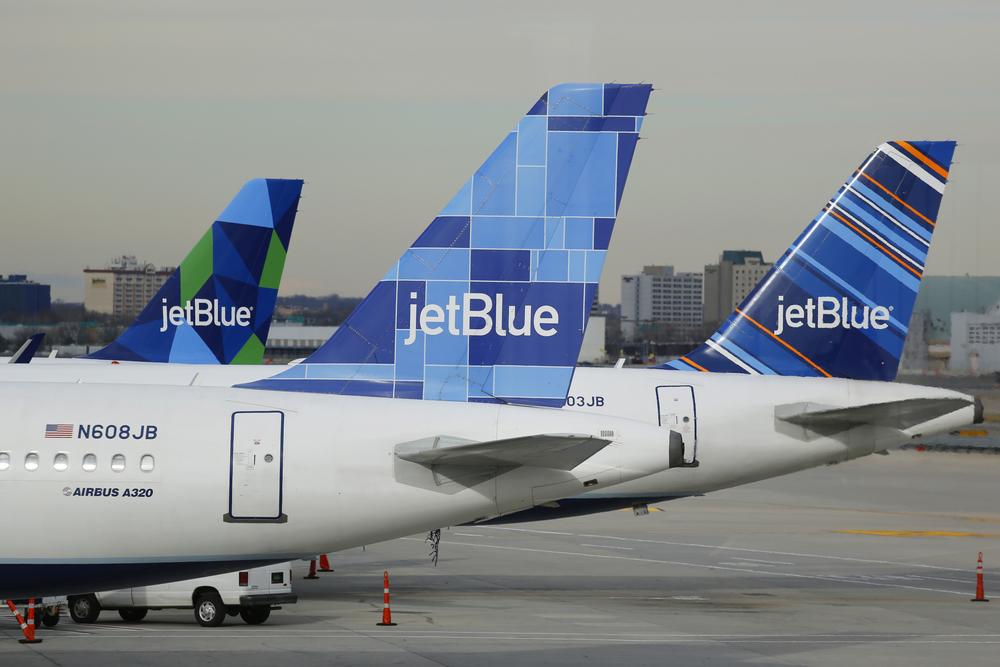JetBlue’s Recovery Plan is Built Around Leisure Travel, Reuniting Friends and Family

After suffering one of the company’s worst financial quarters of all time, JetBlue says their recovery focuses on point-to-point travel and their VFR plan: “Visiting Friends and Relatives.” The airline suffered an adjusted pre-tax loss of $754 million in the second quarter – a direct result of the COVID-19 pandemic.
Despite suffering an adjusted pre-tax loss of $754 million over the second quarter, JetBlue is confident their recovery plan, focused on point-to-point travel and leisure customers, will help them weather the COVID-19 pandemic. The New York-based airline announced their results in their 2020 second quarter report, released July 28, 2020.
JetBlue Wants to be a “Stronger, Global Player” After COVID-19
The massive loss JetBlue experienced was directly attributed to the novel Coronavirus breakout. With passengers not taking to the skies in fear of the virus, the airline said revenue dropped by 90 percent year-over-year. Despite that, the airline says their recovery plan will help them become profitable as the global pandemic comes to an end.
“For the past 20 years we have succeeded against the odds,” Robin Hayes, chief executive of JetBlue, said in a press release. “And we firmly believe that we are laying the foundation and repositioning JetBlue to come out of this historic crisis as a stronger, global player in the years to come.”
In their report, the airline noted that their recovery plan focuses on three steps. First, the carrier must reduce their daily cash burn rate. To achieve that goal, the airline cut capacity by 85 percent in 2020’s second quarter, which ultimately reduced their daily burn rate from $9 million in May, to under $8 million by the end of June.
The second step is to rebuild their margins, which involves generating operating cash and reduce fixed cost bases. The final step requires repairing the balance sheet, which would see the airline get back to pre-COVID investment grade metrics and maintain enough liquidity to mitigate the impact of the demand requirements.
As of the end of the second quarter, JetBlue held $2.9 billion in unrestricted cash, cash equivalents and short-term investments. However, that level was only 36 percent of what the airline held at the end of 2019’s second quarter. Despite these metrics, the airline is confident they can pull through the current crisis and drive stronger results.
“We have been nimble and managed the short term with a sense of urgency, to reduce our cash burn and build liquidity,” Hayes said in the press release. “We are confident that our actions to protect the health and safety of our Customers and Crewmembers, our network changes, and focus on costs will help us rebuild our margins faster.”
Rebuilding Strategy Focuses on Customer Demand and Partnership with American Airlines
Even though the outlook isn’t good, JetBlue is moving forward with their plan to manage their short-term business plans, and accelerate recovery. The airline is immediately leveraging their expansion at Newark Liberty International Airport (EWR) to grow their position in New York, while consolidating their West Coast hub at Los Angeles International Airport (LAX).

A slide shared with investors and the press showcasing JetBlue’s operational goals in the short-term and future. Image courtesy: JetBlue.
In addition, the carrier announced a partnership with American Airlines in July 2020, which would give JetBlue flyers access to American’s domestic and international network. These moves are designed to drive the airline’s focus on their “VFR” plan: leisure travelers who are visiting friends and family.
“We are laser-focused on managing the current environment of low demand,” Joanna Geraghty, president and COO of JetBlue, said in the press release. “In the short term, we have added tactical point-to-point flights, responding to unserved demand in leisure and VFR markets and supporting our cash generation efforts. In the long term, our actions help us solidify our network strategy to improve our position in our Focus Cities. We are taking advantage of unique opportunities presented by the pandemic to allow us to rebuild our margins when demand returns.”
In June 2020, the airline announced a large expansion focusing on leisure travelers. The expansion focuses on tourist destinations and population centers, with the full rollout expected to take shape by October 2020.






















